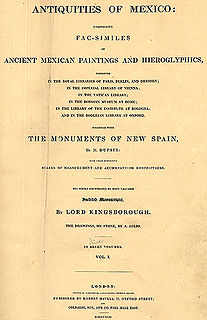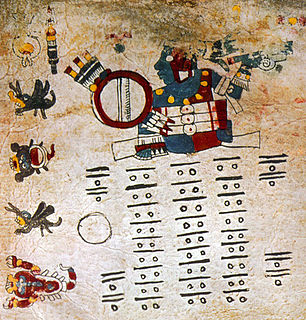Anahuac, 2.5 kilometres above sea level between 19° and 20° north latitude and 98°45’ to 99°20’ west longitude, is the ancient core of Mexico. Anahuac is a Nahuatl name which means "close to water." It can be broken down like this: A(tl) + nahuac. Atl means "water" and nahuac, which is a relational word that can be affixed to a noun, means "close to." Anahuac is sometimes used interchangeably with "Valley of Mexico", but Anahuac properly designates the south-central part of the 8,000 km2 (3,089 sq mi) valley, where well-developed prehispanic culture traits had created distinctive landscapes now hidden by the urban sprawl of Mexico City. In the sense of modern geomorphological terminology, "Valley of Mexico" is misnamed. It is a closed basin of internal drainage, not a valley, in the technical sense.

Aztlán is the ancestral home of the Aztec peoples. Aztecah is the Nahuatl word for "people from Aztlan". Aztlan is mentioned in several ethnohistorical sources dating from the colonial period, and each of them give different lists of the different tribal groups who participated in the migration from Aztlan to central Mexico, but the Mexica who went on to found Mexico-Tenochtitlan are mentioned in all of the accounts. Historians have speculated about the possible location of Aztlan and tend to place it either in northwestern Mexico or the southwest US, although there are doubts about whether the place is purely mythical or represents a historical reality.

Abbé Charles-Étienne Brasseur de Bourbourg was a noted French writer, ethnographer, historian archaeologist, and Catholic priest. He became a specialist in Mesoamerican studies, travelling extensively in the region. His writings, publications, and recovery of historical documents contributed much to knowledge of the region's languages, writing, history and culture, particularly those of the Maya and Aztec civilizations. However, his speculations concerning relationships between the ancient Maya and the lost continent of Atlantis inspired Ignatius L. Donnelly and encouraged the pseudo-science of Mayanism.

The Codex Mendoza is an Aztec codex, believed to have been created around the year 1541. It contains a history of both the Aztec rulers and their conquests as well as a description of the daily life of pre-conquest Aztec society. The codex is written in the Nahuatl language utilizing traditional Aztec pictograms with a translation and explanation of the text provided in Spanish. It is named after Don Antonio de Mendoza, the viceroy of New Spain, and a leading patron of native artists.

Maya codices are folding books written by the pre-Columbian Maya civilization in Maya hieroglyphic script on Mesoamerican bark paper. The folding books are the products of professional scribes working under the patronage of deities such as the Tonsured Maize God and the Howler Monkey Gods. Most of the codices were destroyed by conquistadors and Catholic priests in the 16th century. The codices have been named for the cities where they eventually settled. The Dresden codex is generally considered the most important of the few that survive.

The Dresden Codex is a Mayan book, the oldest surviving book written in the Americas, dating to the 11th or 12th century. The codex was rediscovered in the city of Dresden, Germany, hence the book's present name. It is located in the museum of the Saxon State Library.

Aztecs are books written by pre-Columbian and colonial-era Nahuas in pictorial or alphabetic form.

The Codex Magliabechiano is a pictorial Aztec codex created during the mid-16th century, in the early Spanish colonial period. It is representative of a set of codices known collectively as the Magliabechiano Group. The Codex Magliabechiano is based on an earlier unknown codex, which is assumed to have been the prototype for the Magliabechiano Group. It is named after Antonio Magliabechi, a 17th-century Italian manuscript collector, and is held in the Biblioteca Nazionale Centrale, Florence, Italy.

The Codex Borgia or Codex Yoalli Ehēcatl is an Aztec ritual and divinatory manuscript dating from the 16th century. It is one of a handful of codices that some scholars believe to have been written before the Spanish conquest of Mexico, somewhere within what is now southern or western Puebla, though some scholars also argue that it was produced in the first decades after the conquest as a copy of an earlier Precolumbian codex. The Codex Borgia is a member of, and gives its name to, the Borgia Group of manuscripts.
Mesoamerica, along with Mesopotamia and China, is one of three known places in the world where writing is thought to have developed independently. Mesoamerican scripts deciphered to date are a combination of logographic and syllabic systems. They are often called hieroglyphs due to the iconic shapes of many of the glyphs, a pattern superficially similar to Egyptian hieroglyphs. Fifteen distinct writing systems have been identified in pre-Columbian Mesoamerica, many from a single inscription. The limits of archaeological dating methods make it difficult to establish which was the earliest and hence the forebear from which the others developed. The best documented and deciphered Mesoamerican writing system, and the most widely known, is the classic Maya script. An extensive Mesoamerican literature has been conserved, partly in indigenous scripts and partly in postconquest transcriptions in the Latin script.

The traditions of indigenous Mesoamerican literature extend back to the oldest-attested forms of early writing in the Mesoamerican region, which date from around the mid-1st millennium BCE. Many of the pre-Columbian cultures of Mesoamerica are known to have been literate societies, who produced a number of Mesoamerican writing systems of varying degrees of complexity and completeness. Mesoamerican writing systems arose independently from other writing systems in the world, and their development represents one of the very few such origins in the history of writing. The conquistadors brought their distinctive cultural creations, in the form of books, from Europe to the New World which further influenced native literature.

The Borgia Group is the scholarly designation of number of mostly pre-Columbian documents from central Mexico. In 1830–1831, they were first published in their entirety as colored lithographs of copies made by an Italian artist, Agustino Aglio, in volumes 2 and 3 of Lord Kingsborough's monumental work titled Antiquities of Mexico. They were named the “Codex Borgia Group” by Eduard Seler, who in 1887 began publishing a series of important elucidations of their contents.

Edward King, Viscount Kingsborough was an Irish antiquarian who sought to prove that the indigenous peoples of the Americas were a Lost Tribe of Israel. His principal contribution was in making available facsimiles of ancient documents and some of the earliest explorers' reports on pre-Columbian ruins and Maya civilisation.
William Edmond Gates was an American Mayanist. Most of his research focused around Mayan language hieroglyphs. He also collected Mesoamerican manuscripts. Gates studied Mayan based languages like Yucatec Maya, Ch'olti', Huastec and Q'eqchi'. Biographies state that he could speak at least 13 languages. Works and archives related to Gates reside in the collections of Brigham Young University.

Agostino Aglio was an Italian painter, decorator, and engraver.

The Codex Laud, or Laudianus, is a sixteenth-century Mesoamerican codex named for William Laud, an English archbishop who was the former owner. It is from the Borgia Group, and is a pictorial manuscript consisting of 24 leaves from Central Mexico, dating from before the Spanish takeover. It is evidently incomplete.

The Codex Cospi is a pre-Columbian Mesoamerican pictorial manuscript, included in the Borgia Group. It is currently located in the library of the University of Bologna.

Codex Vaticanus B, also known as Codex Vaticanus 3773, is an Aztec ritual and divinatory document. It is a member of the Borgia Group of manuscripts. It contains 49 leaves, 48 of them are painted on both sides.
The history of libraries in Latin America dates back to before the conquest of the continent by the Spanish. Although the indigenous peoples of Mexico, Central America, and South America had developed a written language and, in some cases, created libraries and record depositories of their own, library history of the continent tends to focus on post-conquest institutions. This article will discuss the history of libraries in Latin America.

The Selden Roll is a 16th century Mexican manuscript painted roll from the Coixtlahuaca region, incorporating both Mixtec and Aztec elements, probably recording myths of the origin and migration of divine ancestors.















